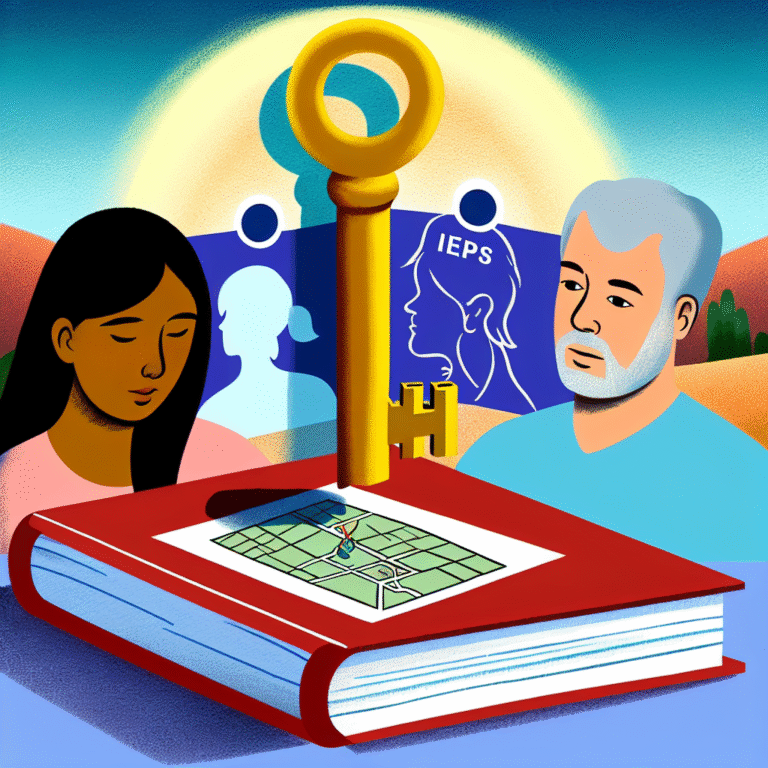The Mind Behind the Wardrobe: Exploring the Psychology of Cross-Dressers
Introduction: Unveiling the Closet’s Secrets
In a world where gender norms are being continuously redefined, the fascinating phenomenon of cross-dressing has gained more visibility and understanding. It’s not merely about clothing; it delves deep into identity, self-expression, and psychological freedom. As we embark on this exploration of The Mind Behind the Wardrobe: Exploring the Psychology of Cross-Dressers, we engage with fundamental questions about motivation, identity, and societal acceptance that affect countless individuals. Understanding these motivations can not only foster empathy and acceptance but can also enlighten those who cross-dress as a means of exploring their identities.
With open minds and hearts, let us demystify the motivations and experiences that lie behind this vibrant layer of human expression.
Understanding Cross-Dressing: A Broad Perspective
Defining Cross-Dressing
Cross-dressing involves wearing clothing associated with a different gender. It’s essential to distinguish this from transgender experiences; not all cross-dressers identify as transgender, and many identify with their biological sex. Cross-dressing can be a form of self-expression, performance, or even a way to cope with stress or societal pressures.
This section will explore the diverse motivations driving individuals to cross-dress.
The Spectrum of Cross-Dressing
- Occasional Cross-Dressers: Individuals who may wear clothing associated with another gender for specific events—like parties or performances.
- Part-Time Cross-Dressers: Those who incorporate cross-dressing into their lives more regularly but do not identify as transgender.
- Full-Time Cross-Dressers: Individuals whose cross-dressing is a permanent aspect of their identity but may not seek medical gender transition.
Table 1: Spectrum of Cross-Dressing
| Type | Definition | Example |
|---|---|---|
| Occasional | Wears clothing for specific events | Attending drag shows |
| Part-Time | Integrates cross-dressing into regular life | Dressing in feminine attire on weekends |
| Full-Time | Identifies primarily with a gender different from birth | Living as a woman full-time |
The Psychological Underpinnings of Cross-Dressing
Identity and Self-Expression
The intricate relationship between clothing and identity cannot be overstated. Clothing is often a reflection of personal beliefs and emotions. For many cross-dressers, choosing to wear clothing associated with another gender can be a liberating act.
Case Study: The Journey of Jake
Jake, a 35-year-old man, has been cross-dressing since his teenage years. Initially, he faced a lot of stigma and internal conflict. Over time, he learned to embrace his love for female fashion, which provided him with a unique way to express facets of his personality he felt were suppressed. His experience underscores a crucial component of The Mind Behind the Wardrobe: Exploring the Psychology of Cross-Dressers: identity exploration can lead to greater self-acceptance.
Image Placement: An image of Jake in his favorite outfit would effectively illustrate his journey and the joy that comes with self-expression.
Psychological Benefits of Cross-Dressing
Many cross-dressers report experiencing therapeutic benefits. Engaging in cross-dressing can:
- Alleviate stress and anxiety
- Enhance self-esteem and body image
- Foster a deeper connection to oneself
Understanding the psychological benefits paints a more profound picture of why individuals may feel compelled to cross-dress.
Societal Perceptions and Stereotypes
Understanding how society perceives cross-dressing is essential for unpacking the phenomena. Unfortunately, these individuals often face societal judgments and stereotypes. Discussions about acceptance, tolerance, and understanding are crucial in changing these negative perceptions.
Motivations Behind Cross-Dressing
Exploration of Gender Identity
Cross-dressing can be an essential way for individuals to explore their gender identity. For many, it represents a journey of discovery rather than a fixed point of view.
Research Insights
A study published by the Journal of Psychology explored the motivations behind adult cross-dressing. It revealed that:
- 69% of participants cited self-exploration as a primary motivation.
- 52% indicated a desire to express a different side of their personality.
This data supports the idea that cross-dressing often serves as an exploratory tool for understanding one’s self.
Emotional Release and Coping Mechanism
For some cross-dressers, donning clothing of a different gender acts as an emotional release. They may find this practice helps them escape the stresses of everyday life or the pressures of societal expectations.
Case Study: Sarah’s Story
Sarah, a 29-year-old elementary school teacher, discovered cross-dressing as a means of coping with the pressures of her adopting a traditional feminine role. Through cross-dressing, she felt invigorated and free. Sarah mentioned, “When I dress up, I feel like I become my true self, a part of me that was always dormant.”
Chart Placement: A chart displaying frequencies of various motivations for cross-dressing can provide visual insights into common patterns of behavior.
The Role of Community and Acceptance
The Importance of Support Networks
The cross-dressing community offers vital support and understanding. Groups, both online and offline, serve as safe spaces for individuals to connect, share experiences, and promote self-acceptance.
Case Study: Online Communities
An online forum identified over 300 active members who engage regularly in discussions around cross-dressing. Participants have reported that this community helped significantly in reducing feelings of isolation and shame, fostering a sense of belonging.
Image Suggestion: Include a screenshot of the forum’s main page or interactions to illustrate community engagement.
Societal Trends in Acceptance
As society progresses toward greater acceptance of varied gender expressions, there is a noticeable shift in attitudes toward cross-dressing. Acceptance campaigns focus on fostering understanding and empathy, showcasing stories of cross-dressing individuals as a step towards inclusivity.
The Intersection of Fashion and Gender
The Influence of Fashion on Perception
Fashion plays a pivotal role in the cross-dressing narrative. It serves as both a medium of expression and a catalyst for societal reflection on gender constructs.
Fashion Icons and Their Impact
Fashion icons, such as David Bowie and RuPaul, have challenged conventional gender norms through their style choices, paving the way for cultural acceptance of diverse expressions. They have opened conversations around gender fluidity, providing validation for those who cross-dress.
Analysis of Media Representation
Media representation influences how society perceives cross-dressing. Analyzing portrayals across different platforms can reveal the progression of societal attitudes.
Table 2: Media Representation of Cross-Dressing
| Medium | Positive Representation (%) | Neutral Representation (%) | Negative Representation (%) |
|---|---|---|---|
| Television | 45% | 30% | 25% |
| Film | 40% | 35% | 25% |
| Social Media | 50% | 40% | 10% |
Stigma and Challenges Faced by Cross-Dressers
Dealing with Societal Stigma
Discrimination against cross-dressers often stems from ignorance and fear. Many experience varying degrees of stigma: from subtle microaggressions to outright hostility.
Coping with Judgment
It’s vital for cross-dressers to develop coping strategies to manage these challenges:
- Building a Support System: Finding friends and communities who accept them can bolster confidence.
- Education and Awareness Campaigns: Engaging in dialogues about cross-dressing can enlighten others, potentially reducing stigma.
Impact of Mental Health
The intersection of stigma, internal conflict, and mental health cannot be ignored. Many cross-dressers struggle with anxiety, depression, and low self-esteem due to societal judgments.
For instance, research conducted by the International Journal of Transgender Health indicated that cross-dressers often report increased anxiety levels correlating with societal rejection.
Chart Idea: A bar graph illustrating reported mental health issues among cross-dressers versus their non-cross-dressing peers.
Conclusion: Embracing Diversity
In exploring The Mind Behind the Wardrobe: Exploring the Psychology of Cross-Dressers, we have uncovered multifaceted dimensions of identity, self-expression, and societal interaction. These individuals illustrate the strength and resilience of the human spirit, navigating a world filled with constraints while advocating for authenticity and acceptance.
As we move forward, it’s crucial to amplify understanding and empathy towards cross-dressers. By fostering inclusive environments—built on understanding and respect—we can celebrate diversity and enrich the human experience.
Takeaway Insight
Embrace who you are, and allow others the same freedom. Whether you’re a cross-dresser or simply an ally, remember that understanding unlocks doors to acceptance.
FAQs
1. What motivates someone to cross-dress?
Cross-dressing can be motivated by various factors, including self-exploration, emotional release, and a desire for self-expression.
2. Is cross-dressing the same as being transgender?
No, cross-dressing refers to wearing clothing associated with another gender, whereas transgender individuals identify with a gender different from their biological sex.
3. How can I support someone who is a cross-dresser?
The best way to support a cross-dresser is by expressing acceptance, engaging in open dialogue, and encouraging their self-expression.
4. Are there any psychological benefits to cross-dressing?
Yes, many report that cross-dressing can reduce stress, boost confidence, and promote self-acceptance.
5. How can we reduce the stigma surrounding cross-dressing?
Engaging in educational campaigns, promoting visibility, and fostering open conversations can help combat stigma and promote understanding.
By exploring The Mind Behind the Wardrobe: Exploring the Psychology of Cross-Dressers, we gain insight not just into the habit itself, but also into the rich tapestry of human experience it represents. Through empathy and understanding, we can contribute to a more accepting world.





